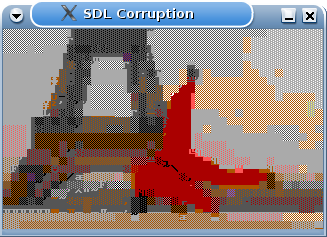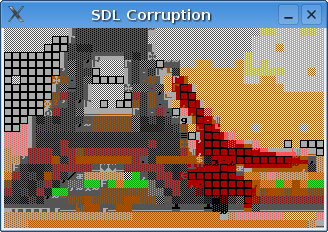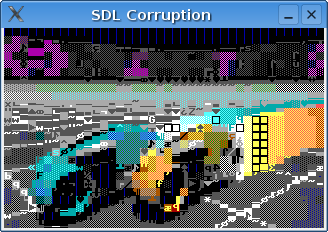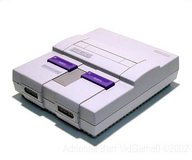When I do presentations on multimedia technology I make the point that data is more important than code which is to say that understanding data formats is more useful than being able to run binary code. This little exercise is a good illustration of that. Initially, if someone wanted to see the multimedia, they needed access to an original IBM PC to run it as it was originally intended. It is also apparently possible to run it under DOSBox. In that case you are still running the original binary code to interpret the data. Now along comes this third solution which throws out the original code and just interprets the data with portable, open code.
Download Trixter’s original 8088 Corruption package from his site. Download the sdl_corruption.c program and the CGA_FONT.8X8 font file from http://multimedia.cx/sdl-corruption/. Make sure you have SDL. Compilation is straightforward on Unix. At the very least, it works on x86 and AMD64 machines running Linux. You are on your own for other platforms.

There, that looks correct, or as correct as it is supposed to look.
I did not bother to add sound output because I was lazy. Hey, I solved the harder problem of rendering the font vectors. I also added a few spiffy features such as allowing the user to seek and pause the video.


